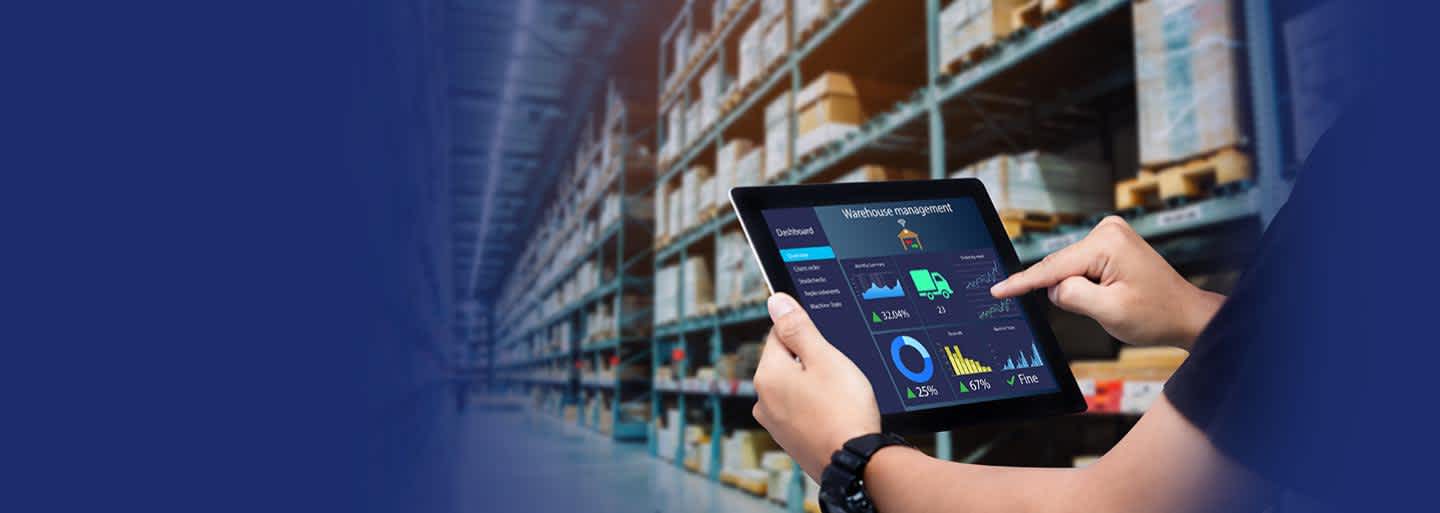EDI Integration and Other Custom Solutions for TMS
A transportation management system (TMS) is enterprise software designed to plan, run, and optimize the physical movement of goods. A TMS platform makes the transportation process transparent, allowing you to access related documents and control the timely delivery of products. There are many ready-made TMS on the market today, yet big organizations often opt for custom solutions. They choose to invest in transportation management system development because off-the-shelf software often cannot meet their particular, unique needs.
In this article, we will review both ready-made and custom-made TM platforms. Also, we’ll consider Electronic Data Interchange (EDI) integration into corporate software and take a look at Erbis’ experience in TMS software development.
Transportation Management Systems in Canada and the USA
Before proceeding to explore the advantages of custom development, let’s look at some ready-made software available for transport companies. Organizations with standard processes greatly benefit from using off-the-shelf software solutions because they don’t need to spend time on development and they get the necessary functionality right away. So, here is how the TOP-5 TMS software providers in the USA and Canada look:
Dossier
Dossier is used by large Canadian companies with a fleet of more than several thousand cars. The system automates all processes related to vehicle maintenance: repair, refueling, driver licensing, and so on. It also offers a Lite version that allows drivers to track meter readings without a Dossier user license. Dossier is an easy-to-use system with essential features for transportation management. Yet, some clients may experience a certain lack of functionality. For example, it is not possible to automatically export data to external software. You can export the data but you have to log into Dossier’s system to download the files.
Price: A one-off payment of $1500 per user.
3Gtms
3Gtms is considered to be one of the best TMS in US logistics. It is designed to manage a full transportation lifecycle and includes a wide spectrum of features like order management, pricing, resource planning, financial settlement, etc. The system provides an intuitive integration hub and extensive deployment options to run the software using either a public or private cloud. However, this system is too expensive for some customers, and many features may be unsuitable for small and medium-sized companies.
Price: $4,000+ per month.
Detrack
Detrack is a delivery management software that tends to simplify transportation management. It offers web and mobile solutions with such features as electronic proof of delivery (POD), a live map view, driver’s route logs, vehicle tracking, etc. Detrack also provides a handy API integration to add the system to a WMS (warehouse management system) or ERP (enterprise resource planning) system and offers to register your first driver free of charge forever. Detrack is handy software, yet it lacks essential features such as SUP integration, budgeting, forecasting, and more.
Price: $24 per month per user.
BlueYonder
BlueYonder is a US-based company providing robust transportation software for big shipping and logistics companies. Their Luminate platform includes demand planning, network design, logistics networking, and inbuilt AI tools to make more informed decisions based on predictive analysis. BlueYonder has many valuable features for transportation companies. However, the system’s interface is quite complicated, and you need to spend time educating your employees to use it.
Price is calculated individually for each client.
Kuebix
The Kuebix TMS is designed for domestic and international companies conducting land, air, and water transportation services. It connects customers with well-known carriers through proprietary API and integration tools and provides a 360-degree view of all the shipping operations. The Kuebix TMS has a handy EDI (electronic data interface) integration and allows customers to access all relevant documents without leaving the Kuebix system. Kubex is constantly updating its functionality, so your employees need to be super agile to quickly adapt to changes.
Price is calculated individually for each client.
Benefits of a custom TMS
Ready-made TMS logistics solutions, like any other out-of-the-box software, are developed for a wide range of customers and aimed at more or less standard business processes. For this reason, owners often don’t achieve the desired outcomes when adapting them to their companies. In addition, start-up businesses may find TMS features overwhelming, while large corporations may face insufficient functionality. So, in both cases, it is impractical to pay big money for a subscription when the software cannot meet business needs.
By choosing fully customized transportation management software, companies receive many benefits like:
unique features
customizable system
effortless scaling-up
no monthly fees
proprietary TMS
Besides, customers are free to choose integration with third-party services, or order their development from scratch. One of the most popular integration solutions for TMS is EDI. EDI helps organizations to automate document flow and avoid annoying mistakes associated with manual data entry. EDI transactions speed up the information exchange. They enable faster order processing and goods shipment. What’s more, with the EDI service you can be sure that special goods are transported under the right conditions.
Imagine you have to send perishable food, for example. When scanning a barcode, the system will automatically generate the conditions for delivery and send them to the warehouse operator. At the same time, an invoice will be sent to the recipient. The operation will take no more than a few seconds and will be completed without delays or errors.
How to integrate EDI
EDI enables computer-to-computer information exchange over file transfer protocols (FTP, SFTP) or API-based systems (AS4, A2). Partners who intend to exchange electronic documents must agree to use the same data exchange method or choose an intermediary, i.e., EDI provider, to connect diverse protocols.
In a custom TMS, you can use either of these methods or a combination of the two. For example, if certain partners use the same EDI protocol as you, you can connect to them directly. However, if they utilize different exchange methods, you can connect with them via an EDI provider.
Whichever method of EDI development you choose, the sequence of actions will be the same:
Preparing documents. The system checks whether the document contains all the necessary information, then it creates an electronic file.
Translating documents into EDI format. There are two ways to translate the documents:
On your side. For this, you need to purchase and install special EDI translation software.
On the provider’s side. For this, you need to connect with an EDI provider of your choice.
Transmitting documents to a partner. The system transmits documents in the EDI format through the selected communication channel.
Other custom solutions for TMS
EDI software development is not the only custom solution used in a self-developed TMS. Depending on your business needs, you can create any features and integrate any third-party services to enhance productivity and streamline workflow. Currently, there are ample opportunities for business automation and augmentation. Some of the most in-demand features in TMS include:
Real-time vehicle tracking
Load planning
Shipment rate management
Shipment conditions control
Predictive analysis with in-built AI-tools
Accounting and reporting
Ultimate customization
Mobile TMS
Once you have decided which features are desirable for your business, the next step is to discuss your requirements in detail, in advance, with the development team. When both the client and team have reached a clear understanding of the desired final result, then the development team can begin the project implementation.
Re-architecting the global TMS: Erbis case study
At Erbis, we have been developing TMS logistics software and supply chain solutions since 2015. One of our largest clients is a San Francisco-based company, for which we have entirely re-architected the supply management software. The system provides robust insights into global supply chains and enhances collaboration between multiple suppliers and customers. Using the system, users can quickly get information on any transport operation, track the path of goods, and see how the delivery price was reached.
We have chosen microservice architecture for our TMS solution because it enhances project agility and enables effortless scaling up. We have also deployed the system in the Amazon Cloud as our experience proves AWS tools are highly effective for developing and deploying large-scale apps. Among other technologies used in TMS supply chain development, we have applied Java EE and Angular for backend and frontend development, respectively.
As of now, Erbis’ transportation management software aggregates data from more than 40 US-based carriers. It offers powerful analytics tools to help companies control their shipping rates, negotiate better contracts, and identify fraudulent activities. Our solution is used by Fortune 500 companies, helping them reduce costs and increase operational efficiency.
Outsourcing TMS development
Transportation management software development is a large-scale project that requires expert knowledge in cloud computing, real-time data processing, and AI implementation. You need an expert team with relevant experience and a good understanding of how supply chain companies work.
Hiring in-house employees for this task may be inefficient because recruiting could take months, if not years. Additionally, an in-house team requires extra expenditure to properly equip the workplace, and for official employment under labor laws, which creates further challenges for business owners.
With an outsourcing partner, you can start the development project immediately. After the discovery phase, you’ll receive a detailed project estimate with a description of the dev

